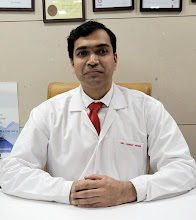Cataract surgery is one of the very commonly done eye surgeries. Crores of patients world wide undergo cataract surgery to regain their sight
In cataract surgery, an artificial lens is implanted. An Intraocular lens (IOL) helps the patient to restore lost vision as well as correct the refractive error they had prior to surgery
Different
lens
types are
available to match patients lifestyle and eye requirements
Ophthalmologist will help you prior to surgery in choosing the best
suited lens for your eyes.
Your
lifestyle requirements, budget and insurance coverage is also
considered while offering you the best.
Lets understand the various artificial lenses available for your eyes
The options we have are
Monofocal IOLs are made to focus at a particular fixed distance. Most patients who opt these monofocals, get it fixed for distance vision. These patients usually require reading glasses.
Multifocal IOLs are designed in such a way that they help you with distance as well as near work such as reading. The newer trifocals help with intermediate distance which is our screen viewing distance (mobile, laptop usage)
Extended depth-of-focus i.e. EDOF lens: they are designed for distance and intermediate work. But the patients who opt them require some reading glasses
Toric lenses designed to correct astigmatism. They can be monofocal, multifocal or EDOF
Some of the cost, insurance and lifestyle factors which are considered before planning the surgery are as follows...
What can I afford?
Most of the insurance companies and insurance policies usually cover monofocal intraocular lenses. Hence when someone opts for premium lenses such as multifocals, toric or EDOF, out of pocket expenses are incurred. But many corporate policies and policies which have high coverage do cover premium lenses. Sentra clinic and hospital's insurance team will help you with all the insurance related process.
Do you spend a lot of time reading, working on screen etc?
If you like doing a lot of near work you can considered multifocal lens. Also you can set your monofocals in such a way that you can do near work without glasses and for distance you will require glasses. Another option is one eye you can set for distance and other for near work with monofocal lens. This is called mono vision. But this may not suit everyone. Also with Multifocals, some patients do require glasses for some activities.
Do you drive at night?
Multifocal lens can give rise to glare and halos which are mostly experienced with bright lights. This can be uncomfortable to some while driving at night. Hence discuss this with your ophthalmologist before opting for multifocal lens.
Do You Have Astigmatism or cylindrical number in spectacles?
Astigmatism can be corrected by Toric lenses which helps in greater clarity of vision post surgery. Your ophthalmologist will discuss the need for toric lenses if they find it suitable for you
Are you suffering from any other eye disease?
Multifocal
and EDOF lenses are usually not ideal
for patients
with
pre existing diseases such as diabetic retinopathy (diabetic eye
disease), glaucoma, macular degeneration etc.
They
allow less light to
pass, hence may increase difficulty for patients. Monovision as
described above can be considered to reduce dependence on glasses.
I
hope above information helps you to converse better with your
ophthalmologist. The above mentioned information is just a point of
view. Your ophthalmologist will be the best suited person to guide
you with the lens choice





.png)



